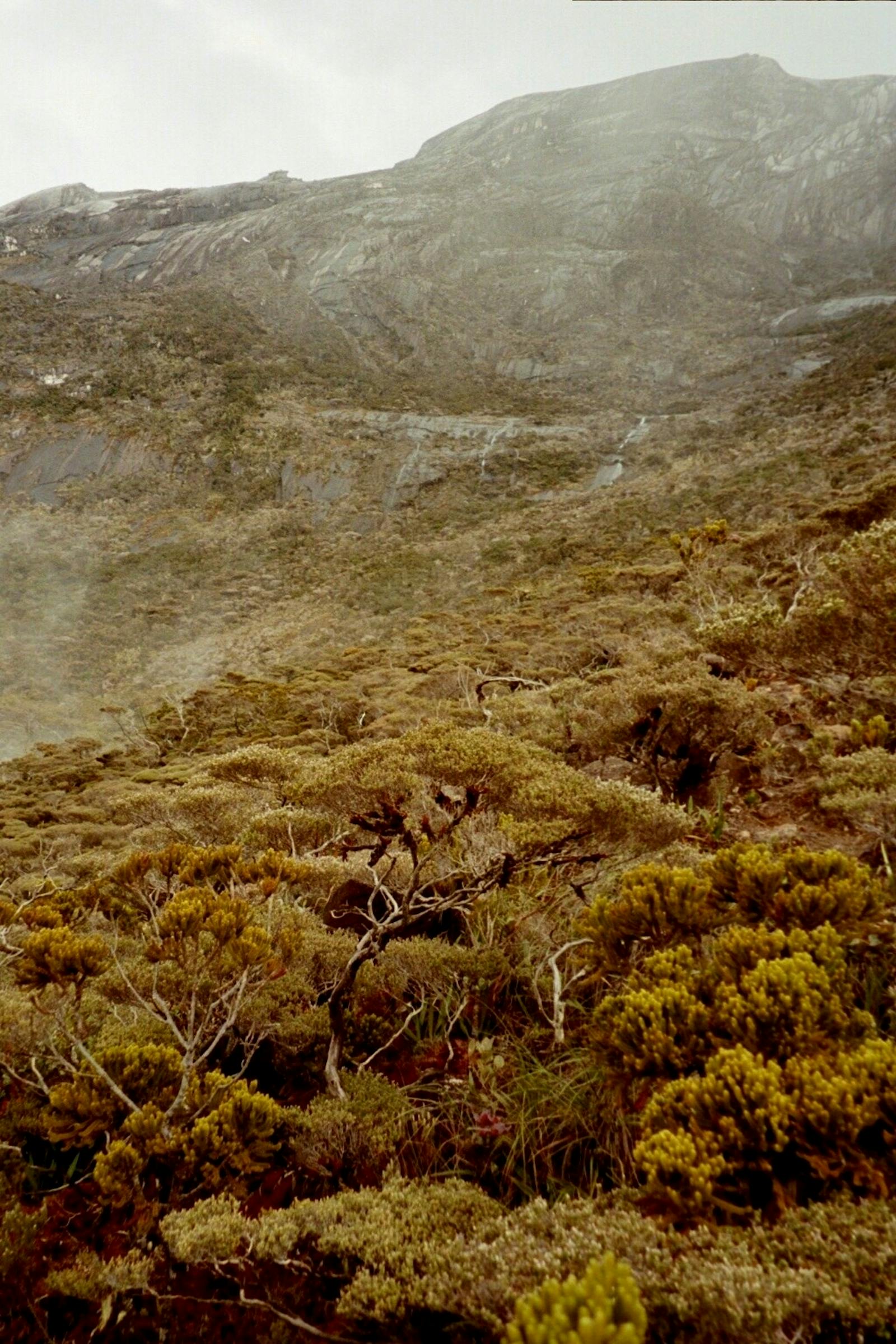Kinabalu Montane Alpine Meadows
The ecoregion’s land area is provided in units of 1,000 hectares. The protection goal is the Global Safety Net (GSN1) area for the given ecoregion. The protection level indicates the percentage of the GSN goal that is currently protected on a scale of 0-10. N/A means data is not available at this time.
Bioregion: Borneo Tropical Forests & Sundaland Heath Forests (IM16)
Realm: Indomalaya
Ecoregion Size (1000 ha):
60
Ecoregion ID:
313
Protection Goal:
100%
Protection Level:
8
States: Malaysia
Straddling the 4,095 m peak of Mount Kinabalu that towers above the vast tropical rainforests of Borneo, the Kinabalu Montane Alpine Meadows ecoregion represents the alpine and subalpine meadows and shrublands of the Kinabalu and Crocker ranges. This is the highest and sole alpine ecoregion in Southeast Asia. The name, ‘Kinabalu’ is derived from aki nabalu meaning ‘the revered place of the dead’, and the indigenous people consider this mountain to be the home of the spirits of their ancestors, refraining from climbing the mountain out of reverence.
Mount Kinabalu and the surrounding Crocker range are geologically young. The origins trace back to volcanic activity during the late Mioecene, about six million years ago. The mountain is still rising at about 5 mm a year. During the Pleistocene ice age, the mountains were enveloped in ice, and glaciers poured down the slopes. About 3,000 years ago, the glaciers and the ice cap atop the mountain melted as the climate warmed, leaving behind deep chasms and ravines, the most extreme one being Low's Gully which plunges from 3,900 m to 1,800 m.
_1_nyoni-pete%20(via%20iNaturalist).jpeg)
The flagship species of the Kinabalu Montane Alpine Meadows ecoregion is the nepenthes (pitcher plant). Image credit: Courtesy of Nyoni-pete, iNaturalist
While Mount Kinabalu exhibits a diverse array of vegetation types from the lowlands to the peak, this ecoregion represents the alpine and subalpine ecosystems at the very top. The subalpine zone, which begins at about 3,000 to 3,400 m, comprises of a vegetation community of tall shrubs and low trees, dominated by species of Rhododendron, Leptospermum, Tristaniopsis, and the conifers Dacrydium and Gymnostoma. These trees are highly stunted, gnarled, and shaped by the harsh climate and strong winds.
About half of the 30 or so species of pitcher plants in Borneo are found on Mount Kinabalu, including some that are endemic to the mountain. They do especially well on the low-nutrient ultramafic soils since these plants get their nutrients by digesting insects that fall into the pitchers. Nepenthes rajah, a species of these pitcher plants endemic to the mountain, is one of the largest, and can be found the lower elevations of this ecoregion. The pitchers of this plant holds up to three and a half liters of water–even rats have drowned in them.
Patches of subalpine meadows grow in open, waterlogged shallow depressions, with herbs such potentillas, buttercups, eyebrights, and gentians. Two characteristic species are the endemic Low’s buttercup and the eyebright. Above 3,700 m, ground frost limits the vegetation and creates a landscape described as an ‘eerie moonscape of stone’, with grasses, sedges and dwarf shrubs such as Leptospermum and Rhododendron ericoides growing in crevices and areas sheltered from the wind, sunlight, and rain.
Orchids grow in all vegetation zones, except for the highest rocky summits; in fact, Mount Kinabalu is a hotspot for orchids, with over 866 species and subspecies from 134 genera, especially species of Bulbophyllum, Dendrobium, Coelogyne, Liparis, and Calanthe.
Most of the mammals in this ecoregion are smaller species, since the larger, charismatic species of Borneo are confined to the rainforests in the lower elevations. This small mammal fauna includes a diverse assemblage of squirrels, tree shrews, weasels, and shrews. The Bornean black shrew is endemic to the higher elevations of Mount Kinabalu. The bird fauna is richer with over 180 species, including 24 near-endemic and one endemic species.
About one-third of this ecologically fragile, high-altitude ecoregion is protected by Kinabalu Park, one of Malaysia’s first national parks. However, increasing visitation pose threats to the biodiversity and ecological processes here. Visitors collect plants, especially orchids, extirpating populations. Climate change will cause some species to become montane isolates as species from lower elevations migrate upwards and displace some of the upper elevation species.
Thus, some of the priority conservation actions are to: 1) regulate visitation and monitor visitor behavior; 2) prevent the collection of rare and endangered plants; and 3) monitor key species populations as indicators of ecosystem change.
Citations
1. Smith, J.M., 1980. The vegetation of the summit zone of Mount Kinabalu. New Phytologist, 84(3), pp.547-573.
2. Merckx, V.S., Hendriks, K.P., Beentjes, K.K., Mennes, C.B., Becking, L.E., Peijnenburg, K.T., Afendy, A., Arumugam, N., de Boer, H., Biun, A. and Buang, M.M., 2015. Evolution of endemism on a young tropical mountain. Nature, 524(7565), p.347.
3. Gibbs, L.S., 1914. A Contribution to the Flora and Plant Formations of Mount Kinabalu and the Highlands of British North Borneo. Botanical Journal of the Linnean Society, 42(285), pp.1-240.


